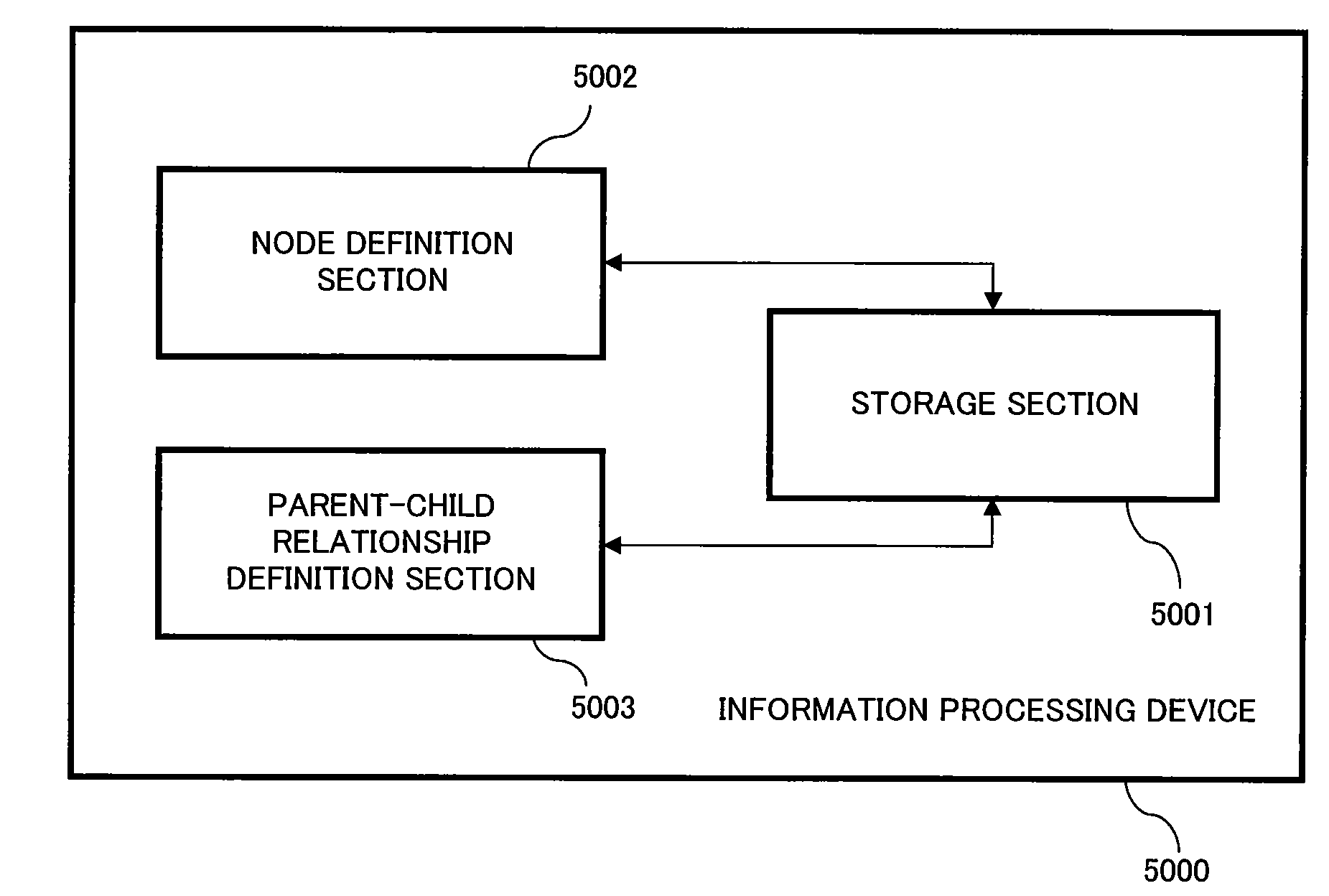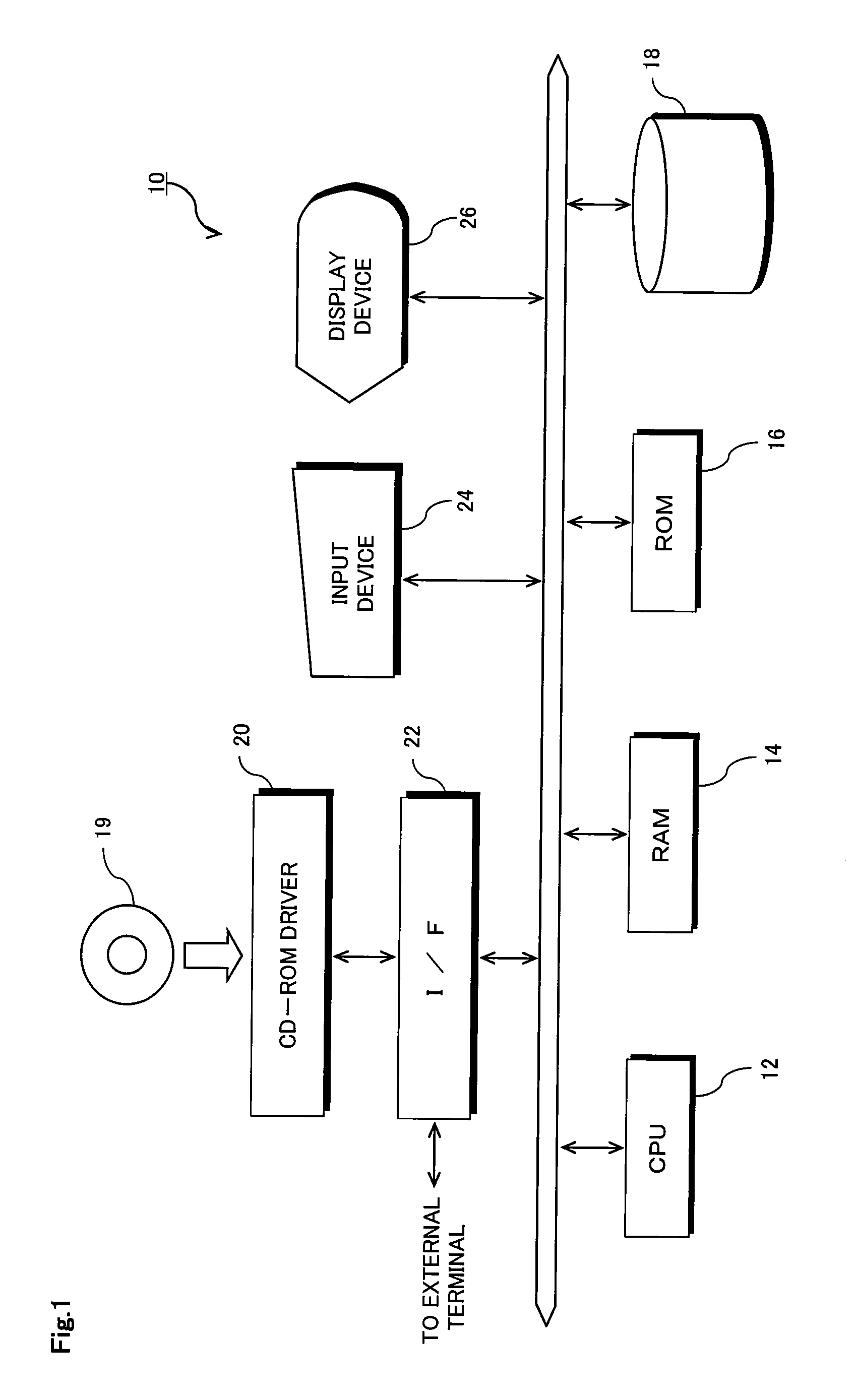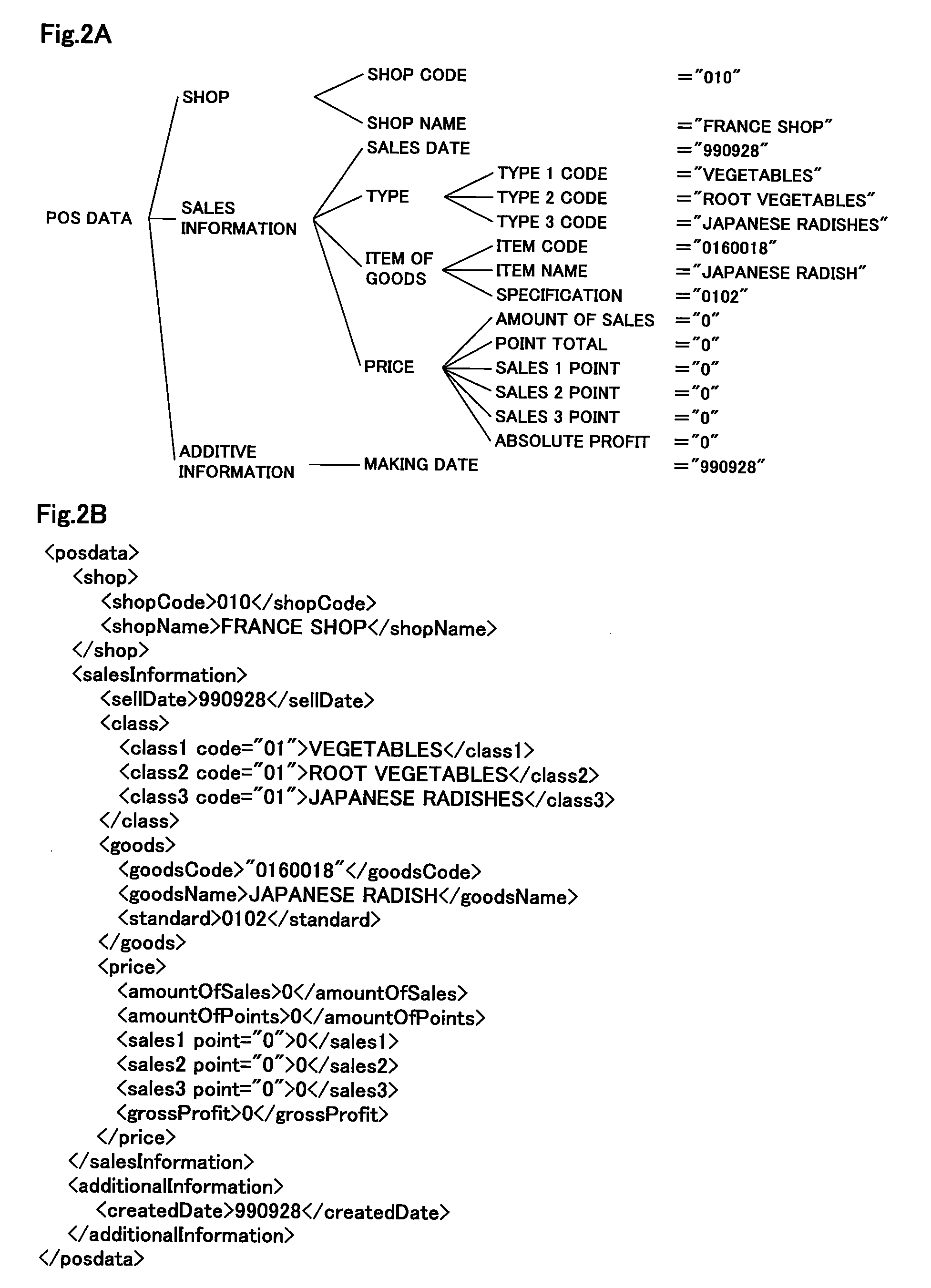Method for Handling Tree-Type Data Structure, Information Processing Device, and Program
a data structure and tree-type technology, applied in the field of tree-type data structure treatment, can solve the problems of difficult to quickly specify the location at which data exists, low efficiency of tree-type data search, and inapplicability to tree-type data treatmen
- Summary
- Abstract
- Description
- Claims
- Application Information
AI Technical Summary
Benefits of technology
Problems solved by technology
Method used
Image
Examples
Embodiment Construction
[0088]Embodiments according to the invention will be hereunder described with reference to the accompanying drawings.
[0089][Construction of Computer]
[0090]FIG. 1 is a block diagram showing the hardware construction of a computer system for treating a tree type data structure according to an embodiment of the invention. As shown in FIG. 1, a computer system 10 has the same construction as a normal one, and it is equipped with CPU 12 for executing a program to control the overall system and individual constituent parts, RAM (Random Access Memory) 14 for storing work data, etc., ROM (Read Only Memory) 16 for storing programs, etc., a fixed storage medium 18 such as a hard disk or the like, a CR-ROM driver 20 for accessing CD-ROM 19, an interface (I / F) 22 that is provided between the CD-ROM driver 20 and an external terminal connected to an external network (not shown), an input device 24 comprising a keyboard and a mouse, and a CRT display device 26. CPU 12, RAM 14, ROM 16, the externa...
PUM
 Login to View More
Login to View More Abstract
Description
Claims
Application Information
 Login to View More
Login to View More - R&D
- Intellectual Property
- Life Sciences
- Materials
- Tech Scout
- Unparalleled Data Quality
- Higher Quality Content
- 60% Fewer Hallucinations
Browse by: Latest US Patents, China's latest patents, Technical Efficacy Thesaurus, Application Domain, Technology Topic, Popular Technical Reports.
© 2025 PatSnap. All rights reserved.Legal|Privacy policy|Modern Slavery Act Transparency Statement|Sitemap|About US| Contact US: help@patsnap.com



